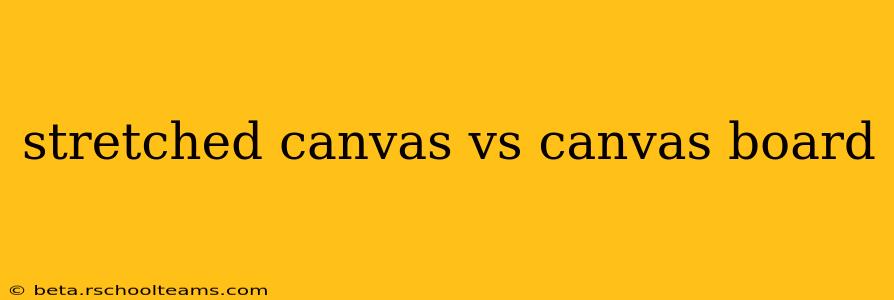Choosing the right painting surface can significantly impact your artistic process and the final outcome of your artwork. Two popular options are stretched canvas and canvas board, each with its own set of advantages and disadvantages. This comprehensive guide will help you understand the key differences between stretched canvas and canvas board, enabling you to make an informed decision based on your needs and artistic style.
What is a Stretched Canvas?
A stretched canvas is a piece of cotton or linen fabric stretched tightly over a wooden frame. The fabric is stapled to the back of the frame, creating a taut, smooth surface ideal for painting. The depth of the frame, often referred to as the profile, varies, offering options for different painting styles and framing preferences. Stretched canvases are available in a wide range of sizes and are often pre-primed, saving you a preparation step.
Advantages of Stretched Canvas:
- Flexibility: The taut fabric allows for the use of various painting techniques, including thick impasto styles. The flexibility also accommodates layering and texture without buckling.
- Durability: A well-stretched canvas, particularly one made from linen, is exceptionally durable and can last for generations with proper care.
- Professional Appearance: Stretched canvases offer a professional and polished look, perfect for framing and displaying artwork.
- Larger Sizes: Stretched canvases are readily available in larger sizes, suitable for ambitious projects.
Disadvantages of Stretched Canvas:
- Cost: Stretched canvases are generally more expensive than canvas boards.
- Storage: They require more storage space due to their bulkier nature.
- Handling: Larger stretched canvases can be cumbersome to handle and transport.
What is a Canvas Board?
A canvas board consists of a piece of cotton or linen canvas glued or stapled to a sturdy board, typically made of cardboard or compressed wood. This creates a rigid and lightweight surface suitable for painting. Like stretched canvases, canvas boards are usually pre-primed.
Advantages of Canvas Board:
- Affordability: Canvas boards are significantly cheaper than stretched canvases, making them a great option for beginners or for practicing techniques.
- Portability: Their lightweight and rigid nature makes them easy to transport and store.
- Ease of Use: No stretching or priming is required; they're ready to paint straight out of the package.
- Suitable for Smaller Projects: They are readily available in a wide range of smaller sizes.
Disadvantages of Canvas Board:
- Limited Flexibility: The rigid surface isn't ideal for thick impasto styles or highly textured work. The canvas may buckle or crack under significant pressure.
- Less Durable: They are generally less durable than stretched canvases and prone to damage from moisture or rough handling.
- Smaller Size Limitations: While smaller sizes are plentiful, finding large canvas boards can be challenging.
Stretched Canvas vs. Canvas Board: Which Should You Choose?
The best choice depends entirely on your needs and painting style:
-
Choose stretched canvas if: You require a flexible, durable surface suitable for large-scale works, thick impasto techniques, and professional presentation. You're willing to invest more in your materials.
-
Choose canvas board if: You need a lightweight, affordable, and easy-to-use surface for smaller projects, practice pieces, or quick studies. Portability is a key consideration.
What Kind of Primer Should I Use on a Canvas?
Many pre-primed canvases are available, eliminating the need for additional priming. However, if you're using unprimed canvas, you’ll need to prime it before painting. Acrylic gesso is a popular and versatile choice for both canvas and canvas boards, providing a smooth, even surface and enhancing the adhesion of your paints.
Can You Paint on Both Sides of a Stretched Canvas?
While technically possible, it's generally not recommended to paint on both sides of a stretched canvas simultaneously. Painting on one side can affect the tension and surface of the other side, potentially leading to cracking or warping.
Is Canvas Board Good for Beginners?
Canvas boards are an excellent choice for beginners due to their affordability, ease of use, and portability. They allow you to focus on technique without the added cost and complexity of stretched canvases.
Are Canvas Boards Waterproof?
Canvas boards are not waterproof. While the canvas may be treated to resist some moisture, prolonged exposure to water can damage the board and cause the paint to lift or peel.
This detailed comparison should provide you with a clear understanding of the differences between stretched canvas and canvas board, empowering you to select the perfect painting surface for your next artistic endeavor. Remember, experimentation is key. Try both options to determine which suits your style and preferences best!
